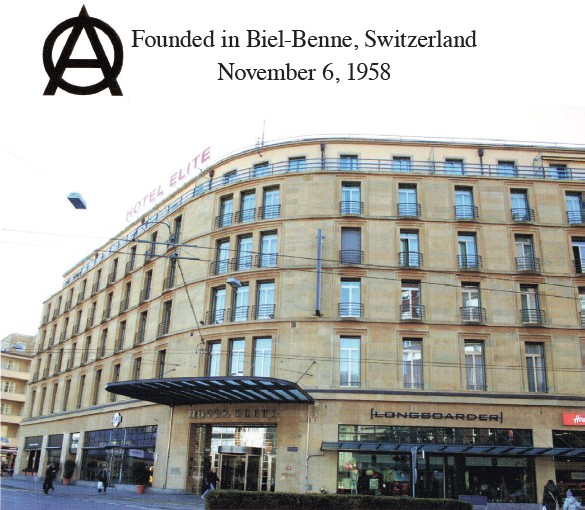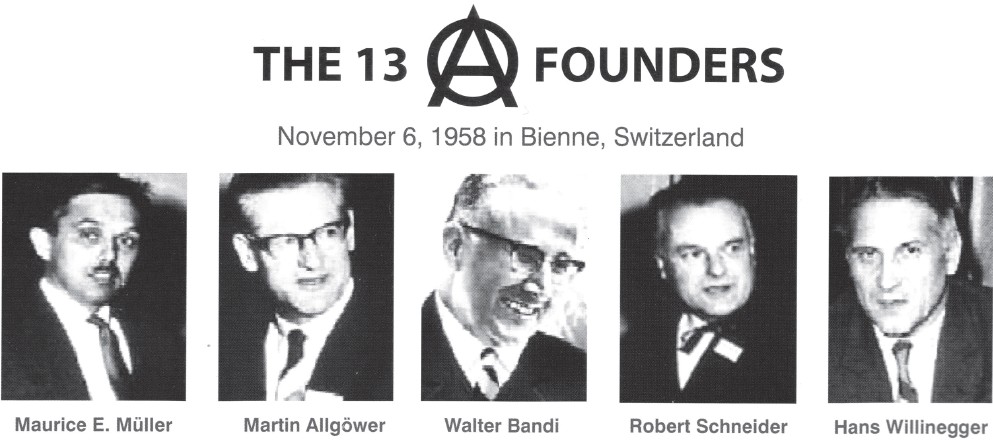In 1958, a group of Swiss general and orthopedic surgeons established the AO (Arbeitsgemeinschaft für Osteosynthesefragen). Their mission was to transform fracture treatment in Switzerland, which at that point in time included prolonged bed rest in traction and subsequent application of a cast or splint, often resulting in poor functional results and lifelong disability. The “core group” of founders consisted of Maurice E. Müller, Hans Willenegger, Martin Allgöwer, and two other early members, Robert Schneider and Walter Bandi. Today, the AO Foundation (which was officially established in 1984) is a medically guided, global network with over 10,000 surgeons, in more than 100 countries. It is the world’s leading educational and research organization for trauma and musculoskeletal treatment and reflects a global knowledge network and interdisciplinary teamwork. The AO Foundation is founded on the four principles of documentation, teaching, research, and instrumentation. The AO Foundation’s vision is excellence in the surgical management of trauma and disorders of the musculoskeletal system. Its mission is to foster and expand a network of healthcare professionals in education, research, development and clinical investigation to achieve more effective patient care worldwide.


In the 1950s, when the core group of five Swiss surgeons Maurice E. Müller, Hans Willenegger, Martin Allgöwer, Robert Schneider and Walter Bandi came together, they set out to extensively examine treatment goals. They then decided to develop a system of implants, instruments, and surgical techniques that would allow the reliable treatment of fractures. During this early period, the AO developed a new method involving application of a compression plate and the concept of the lag screw to achieve their goal of rigid internal fixation of fractures. The AO pioneers also realized that immobilization resulted in atrophy of the soft tissues, osteoporosis, thinning of articular cartilage, severe joint stiffness, and, at times, causalgic pain. To prevent these complications and improve the results of fracture treatment, they introduced “functional after-treatment.” This concept was based on the observation that when stable fixation of a fracture was achieved surgically, most of the pain was effectively eliminated, which made immediate and full mobilization of the extremity possible. Thus the much-quoted and timeless expression among the AO Foundation members “Life is movement, movement is life” was born. The demands on this type of operative treatment were great. The reduction had to be anatomic, and the fixation had to be sufficiently strong, stable, and lasting to allow functional use without the risks of hardware failure, delayed union, nonunion, or deformity. Soft-tissue handling was also of paramount importance since infection should not mar the outcome. In close collaboration with two Swiss manufacturing firms, the AO began an intensive period of development to produce comprehensive new sets of instruments and implants for fracture treatment.
Today, continued development along with clinical testing of new instruments and implants and the creation of educational materials for these products are handled within the AO Foundation by a system of medical-technical committees: the TK-System. It consists of several specialty Expert Groups and the core Technical Commission (AOTK). Research is one of the pillars on which the success of the AO is based and the network of AO surgeons and scientists actively pursue clinical and laboratory investigations.
The first ever Davos Course took place on December 10, 1960. Prof Hermann Kraus (1899-1972) from Freiburg, Germany, the first senior surgeon from outside Switzerland to support the AO, was the guest of honor. The first four-day course was led by Maurice Müller and was held at the AO laboratory in Davos with 69 attendees. In 1961, the second AO Course in Davos registered 102 participants. In 1963, the third AO Course was held in German. English and French were introduced at the fourth AO Course in December 1963. The AO Course was extended from four to five days in 1964. From 1966 onwards, the AO Courses were hosted at the newly built Congress Centre in Davos (where they are still held to this day). The first ever Advances Course was also held the same year. Being practicing surgeons themselves, the AO members understood that a large part of the success of their treatment method would be dictated by good cooperation with operating room personnel (ORP). Hence, in 1967, at the Davos Courses, a teaching program for ORP was developed. The AO Foundation Davos Courses are now an annual flagship educational event that attracts 1,700 participants and more than 400 faculties from around the world.
The concept of regionalization was born when Prof Marvin Tile was the President of the AO Foundation (from 1992 to 1994). In November 1994, AO East Asia (AOEA) was founded under the leadership of Dr Suthorn Bavonratanavech, who also became the first chairman of AOEA. At the time of its inception the region included Hong Kong, Indonesia, Malaysia, Philippines, Singapore, South Korea, Taiwan and Thailand. Prof S P Chow, the second chairman, spearheaded the growth of scientific activities within AOEA and the third chairman, Dr G On Tong united the region of AO Asia-Pacific (AOAP). In 2003 Japan joined AOAP and in November 2006, the AO trustees of the People’s Republic of China also became members. Additional momentum built up at the AO courses in 2006 in Davos when Trustees from Australia and New Zealand agreed to join the Asian Trauma Group. At that time, the chairman of AOAP, Dr G On Tong, decided to rename this new body AO Trauma Asia-Pacific (AOTAP). At the Tips for Trainers event in New Delhi in February 2007, the Trustees from India accepted an invitation to join AOTAP. In less than six months, AOTAP became a reality, representing one of the major regions of the AO Foundation.
On 22-24 June 1985, the first AO Basic Course was held in Thailand at Pramongkutklao Royal Thai Army Hospital, followed by another in August of the same year. We encountered lots of problems organizing the course and they should be recorded for the awareness of the younger generation.
Starting from the course name, it was initially prohibited to use the word “AO”, which was deemed to be an advertisement, so the course had to be named “Operative Treatment of Fracture”. When the AO concept and principles became more accepted, then the course name was changed to “AO Principles of Operative Fracture Management” as it is known nowadays. Each training institute wished to have their senior surgeons taking most involvement in the lecture session. In order to reduce conflicts, we attempted to meet their requirements. Problems also occurred with the evaluation as the participants were asked to fill in a form to evaluate each lecturer. Some surgeons complained that we had no right to evaluate them. Nevertheless, the lecturers and their presentation have improved gradually since then.
The greatest difficulty in the course arrangement related to the practical exercises, as there was only one set of instruments for each procedure. So the participants could not simultaneously practice the same exercise. When arranging the course program, we had to set the lectures on Thursday and Friday whereas Saturday and Sunday were for practical exercises. The residents travelling from upcountry would perform the exercises first so that they could travel back for work on Monday. The residents in Bangkok would be allocated to do the exercises on the following Saturdays and Sundays. As a result, the complete arrangement took 4 weeks. Each workshop could only take 18 persons i.e. 2 persons per exercise doing 9 exercises.
In 1994 the AO East Asia (AOEA) was founded and it united a group of orthopedic surgeons from several countries in East Asia with the aim of collaboration for education, teaching, research, etc. The most significant change was the formation of Permanent Workshop (PWS) for the AOEA group. There is now availability of the instruments for teaching activities among the member countries without the need to wait for the instruments from Switzerland. This allows flexibility for each country to set the timing of courses, resulting in more convenience and greater benefits. However, in Thailand, the workshop rotation system still has to be utilized as it helps to reduce the costs of instrument procurement. We need only 10 sets of instruments for 20 participants. In the case of 60 participants performing the same exercise in concurrence, there is the need for 30 sets for each of 9 exercise instrument sets. Thus, to let participants rotate to perform 3 exercises at the same time is an economical solution, saving costs by one-third.
The cost of workshop instruments sets of CHF 6 million was the combined investment of Mathys and AO International. I would like to express my gratitude to Prof. Peter Matter who was the President of AO international at that time to take a courageous decision to set up the PWS in East Asia. Since 1995, the arrangement of practical exercises has been the pattern as today’s practice and we are very pleased that that this year more instruments have been supplemented. The theory session has been designed to follow the module of Education Commission of AO International to guarantee the teaching is up to worldwide standards. We are proud to have fought against and overcome problems and obstacles until the AO principles and knowledge of operation for fracture treatment could be widely imparted among instructors, senior surgeons and junior surgeons, resulting in direct benefits to the patients.